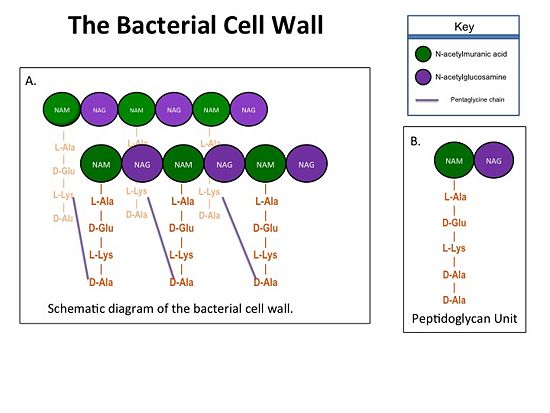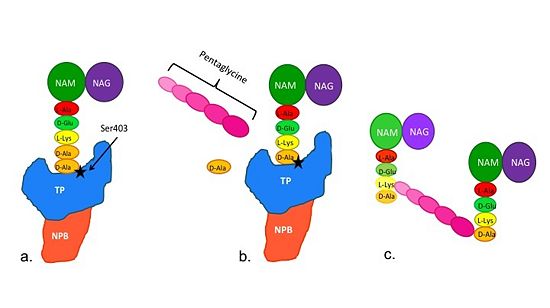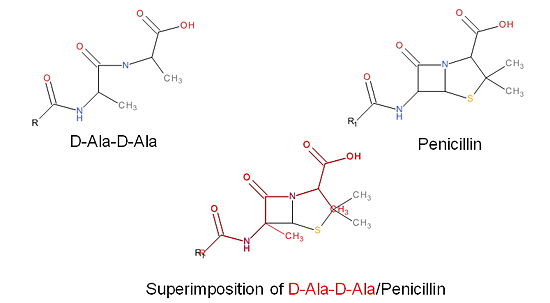Sandbox 123
From Proteopedia
(Difference between revisions)
| Line 42: | Line 42: | ||
MRSA becomes resistant to β-lactams by acquiring an alternative PBP, PBP2a, that is | MRSA becomes resistant to β-lactams by acquiring an alternative PBP, PBP2a, that is | ||
| - | neither bound nor inhibited by β-lactams. Recently, two cephalosporins – <scene name='36/365380/Ceftobiprole/4'>ceftobiprole</scene> and | + | neither bound nor inhibited by β-lactams. Recently, two cephalosporins – <scene name='36/365380/Ceftobiprole/4'>ceftobiprole</scene> and ceftaroline – that have anti-MRSA activity have been developed. Ceftobiprole is able to |
| - | ceftaroline – that have anti-MRSA activity have been developed. Ceftobiprole is able to | + | |
inhibit PBP2a because additional chemical groups at the <scene name='36/365380/Ceftobiprole/12'>R2</scene> position of the cephalosporin backbone are able to interact with additional amino acid residues in PBP2a; specifically | inhibit PBP2a because additional chemical groups at the <scene name='36/365380/Ceftobiprole/12'>R2</scene> position of the cephalosporin backbone are able to interact with additional amino acid residues in PBP2a; specifically | ||
<scene name='36/365380/Ceftobiprole/27'>Tyr446 and Met641</scene>. As a result of its tighter binding to PBP2a, ceftobiprole is able to more | <scene name='36/365380/Ceftobiprole/27'>Tyr446 and Met641</scene>. As a result of its tighter binding to PBP2a, ceftobiprole is able to more | ||
| Line 55: | Line 54: | ||
In addition to TP domain of PBP2a, there is an allosteric domain,highlighted orange, in which the distance between <scene name='36/365380/3zfz_1/17'>the active site and the allosteric site</scene> is 60Å. | In addition to TP domain of PBP2a, there is an allosteric domain,highlighted orange, in which the distance between <scene name='36/365380/3zfz_1/17'>the active site and the allosteric site</scene> is 60Å. | ||
| - | Allosteric site serves as a binding site for the substrate <scene name='36/365380/3zfz_1/7'>peptidoglycan</scene>. When the substrate binds to the <scene name='36/365380/3zfz_1/ | + | Allosteric site serves as a binding site for the substrate <scene name='36/365380/3zfz_1/7'>peptidoglycan</scene>. When the substrate binds to the <scene name='36/365380/3zfz_1/18'>allosteric site</scene> (Tyr105, Asn146, Asp295, Tyr297), a conformational change occurs at the active site, opening it and allowing catalytic action to occur. |
The medicine, <scene name='36/365380/3zfz_1/12'>ceftaroline</scene>, mimics the substrate at the allosteric site opening the active site, allowing ceftaroline to <scene name='36/365380/3zfz_1/14'>enter and bind noncovalently</scene>. | The medicine, <scene name='36/365380/3zfz_1/12'>ceftaroline</scene>, mimics the substrate at the allosteric site opening the active site, allowing ceftaroline to <scene name='36/365380/3zfz_1/14'>enter and bind noncovalently</scene>. | ||
Revision as of 21:03, 30 April 2014
| |||||||||||



